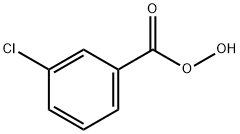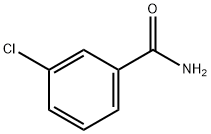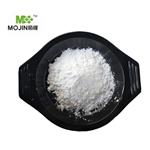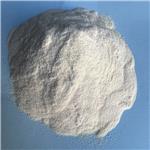Chemical Properties
3-chloroperoxybenzoic acid is white powdery crystals. Melting point is 92-94°C (decomposed). It is almost insoluble in water, but soluble in ethanol, ethers, chloroform, and dichloroethane. It is thermally stable and has an annual decomposition rate of less than 1% at room temperature. The decomposition rate is accelerated in the liquid state. 3-Chloroperbenzoic acid is sensitive to heat and shock, and pure solid. 3-Chloroperbenzoic acid is flammable and potentially explosive. It contains a weak –O–O– bond and a nucleophilic OH group, that makes it versatile oxidative and easily breakable.
Uses
3-Chloroperoxybenzoic acid is commonly used in double bond epoxidation, nitridation, cyclization, Baeyer-Villiger oxidation, and N-oxidation. It can also be used as an oxidant for fine chemicals such as synthetic medicine and pesticides. It is also sometimes used as a bleaching agent [1-6].
• Used in cyclization reaction, Baeyer-Villiger reaction, N-oxidation reaction and S-oxidation reaction.
• Used as an oxidant for fine chemical products such as synthetic medicine and pesticides.
• Used as oxidant and bleach.
• As a good electrophilic reagent, it can react with many functional groups and can oxidize olefins, enol silyl ethers, furans, sulfides, selenides and amino compounds.
Chemical Properties
White moist powder
Uses
Effective oxidant for epoxidizing di-, tri-, and tetra-substituted olefins.
Uses
3-Chloroperoxybenzoic acid is a strong oxidizing agent used in the oxidation reactions such as aldehydes and ketones to esters (Bayer-Villiger-Oxidation), olefines to epoxides, sulfides to sulfoxides and sulfones, and amines to nitroalkanes, N-oxides.
Definition
ChEBI: 3-chloroperbenzoic acid is a peroxy acid and a member of monochlorobenzenes.
Reactions
3-Chloroperoxybenzoic acid (MCPBA) is one of the most popular oxidation reagent in organic synthesis, because of its outstanding performance in terms of:
reactivity, combined with reducing the number of reaction steps in classical synthetic routes,
regio- and stereoselectivity,
protection of functional groups mostly not required,
high purity and yields.
Its literature covers a huge area of different syntheses and below reaction equations just can be a brief overview of its interesting applications:
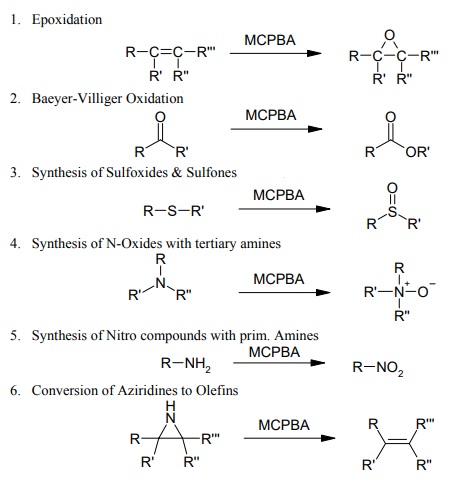
General Description
3-Chloroperoxybenzoic acid is sensitive to heat. Storage of 3-Chloroperoxybenzoic acid must be done so with stringent temperature control measures. It's explosion hazard is also mitigated by mixing the peroxide in a solvent slurry.
Reactivity Profile
May explode from heat, shock, friction or contamination. May ignite combustibles (wood, paper, oil, clothing, etc.). May be ignited by heat, sparks or flames.
reaction suitability
reagent type: oxidant
Purification Methods
Recrystallise MCPBA from CH2Cl2 [Traylor & Mikztal J Am Chem Soc 109 2770 1987]. Peracid of 99+% purity can be obtained by washing commercial 85% material with phosphate buffer pH 7.5 and drying the residue under reduced pressure. Alternatively the peracid can be freed from m-chlorobenzoic acid by dissolving 50g/L of *benzene and washing with an aqueous solution buffered at pH 7.4 (NaH2PO4/NaOH) (5 x 100mL). The organic layer is dried over MgSO4 and carefully evaporated under vacuum. Necessary care should be taken in case of EXPLOSION. The solid is recrystallised twice from CH2Cl2/Et2O and stored at 0o in a plastic container as glass catalyses the decomposition of the peracid. The acid is assayed iodometrically. [Schwartz & Blumbrgs J Org Chem 29 1976 1964, Bortolini et al. J Org Chem 52 5093 1987, McDonald et al. Org Synth Coll Vol VI 276 1988, Beilstein 9 IV 972.]
